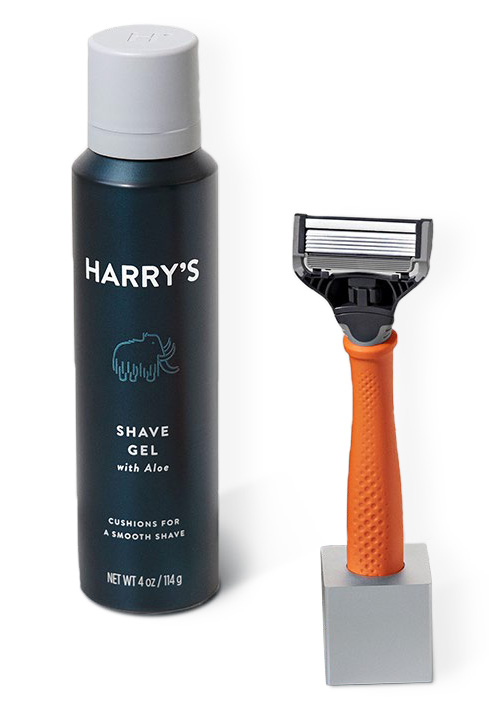Harry’s is a men’s personal care brand that has seen remarkable success since being founded in 2013.
After its strong performance selling subscription-based shaving products, Harry’s has expanded into multiple new product lines and markets. Now they’re piloting Anvyl to meet the supply chain complexity their growth has spurred.
Matt Gornstein, Director of Global Sourcing at Harry’s, manages one of four critical teams that make up the company’s supply chain operations. As the company grows, Gornstein and his team are constantly on the lookout for ways to scale in a smoother, more cost-effective way. Harry’s continues to launch products across new channels and geographies, and the sourcing team is excited about the visibility Anvyl can give them into their supplier and production activity across the globe.
A Track Record of Innovation
$1.37 Billion
in acquisition
Harry’s saw an opportunity to build a brand that was very different from the leading players: a brand that would resonate with guys, that’s more relatable and more customer-focused. Harry’s embraced a direct to consumer model that offered customers a lower price point for quality goods, their founding team taking cues from previous successes like Jeff Raider’s Warby Parker.
In addition to great marketing, Harry’s focused heavily on supply chain innovation as a way to differentiate themselves from existing brands. They aimed for true vertical integration of their razor blades, by purchasing a manufacturing facility in Germany. This allowed them to offer better pricing, build consumer feedback into product design, and scale quickly to meet launches. Their unique approach to the men’s grooming market led to a $1.37 billion acquisition.
We’re managing suppliers and production plans over email exchanges that are reviewed during status meetings. We send spreadsheets and documents back and forth, and there’s an opportunity to leverage a platform to generate these types of reports and updates.
Matt Gornstein
Director of Global Sourcing at Harry’s
Challenging the Supply Chain Status Quo
The Harry’s sourcing team actively searches for tools and systems that can supplement their dynamic supply chain in an effort to find more scalable ways to track data about suppliers, manufacturing, and shipments. The team has been piloting Anvyl in hopes of adopting an automated solution for increased transparency across the supply chain, specifically with production reporting and tracking.
As part of the pilot, the sourcing team is starting to move purchase order data over to Anvyl’s Production Hub, so they can test it as a central place for everyone to see sourcing and production information.
It’s clear that the Production Hub was developed based on Anvyl’s deep expertise in manufacturing. The Anvyl platform is useful for brands looking for an intuitive, dashboard style supply chain tracking and management software.
The goal: greater visibility and intuitive dashboards

The sourcing team at Harry’s already sees promise in Anvyl, hoping to use the platform’s intuitive, easy-to-digest format to encourage a culture of accountability and transparency for the entire supply chain journey. They use the Production Hub to quickly check in on the POs they’ve issued and confirm critical milestones, like when a product is being manufactured, packed, or shipped to one of the Harry’s distribution centers.
The Harry’s sourcing team places a high value on supply chain transparency, noting that the suppliers who leverage the platform can easily provide updates to the team, which means fewer surprises when it comes to delivery dates. “With Anvyl, someone on the team can check the PO dashboard to ensure our orders are being produced and product is going to ship on time”, Gornstein says.
A promising future for Harry’s growing supply chain
As the pilot progresses, the sourcing team will gradually add more production data into the platform. Gornstein says he sees the opportunity to leverage Anvyl for a single view of all existing orders and suppliers. He’s found the pilot easy to implement, with minimal change management and resources needed to add their data to the Production Hub.
